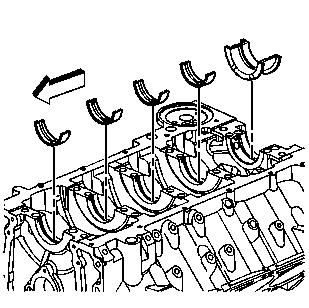
Important:
| • | Lubricate the crankshaft bearings and crankshaft with clean engine
oil. |
| • | If undersized bearings are used, ensure that the bearings are
fitted to the proper journals. |
- Install the crankshaft upper bearings into the block. Apply clean engine
oil to the bearing surfaces.
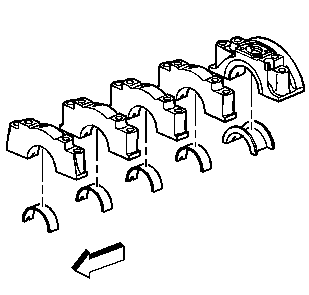
- Install the crankshaft
lower bearings into the crankshaft bearing caps. Apply clean engine oil to
the bearing surfaces.
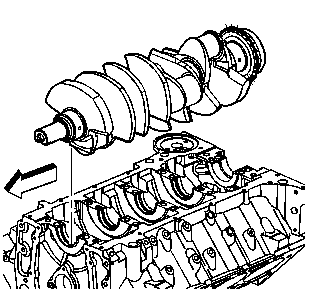
Important: Care should be taken when installing the crankshaft so the crankshaft
position sensor reluctor ring is not damaged. If the reluctor ring becomes
damaged, the crankshaft must be replaced.
- Install the crankshaft.
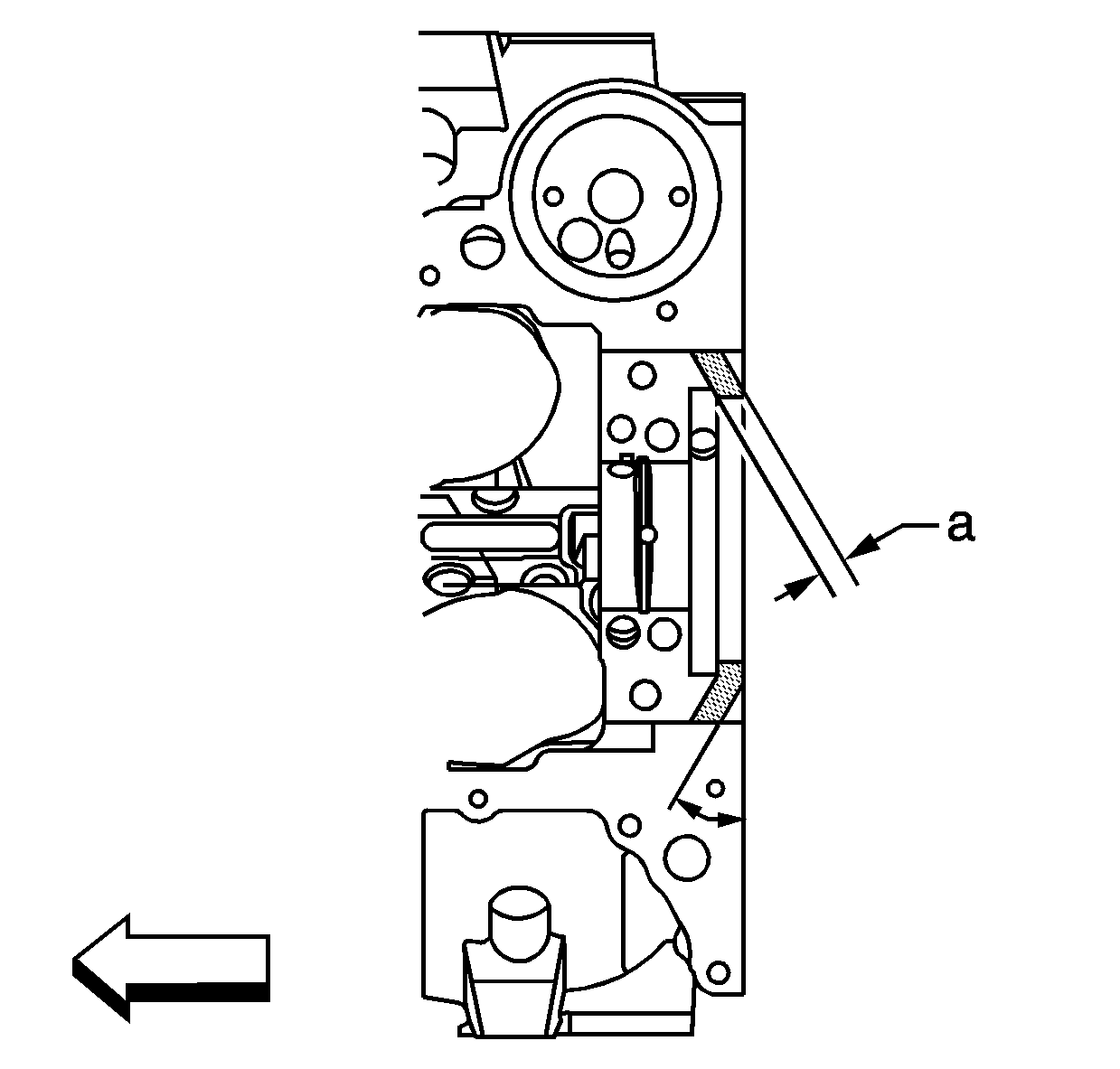
- Apply a 13 mm (0.500 in) light film of GM P/N 1052942
or equivalent to the rear bearing cap sealing face or to the rear bearing
cap channel of the engine block. Apply the sealant from the corner of the
rear thrust bearing pocket to the edge of the channel.
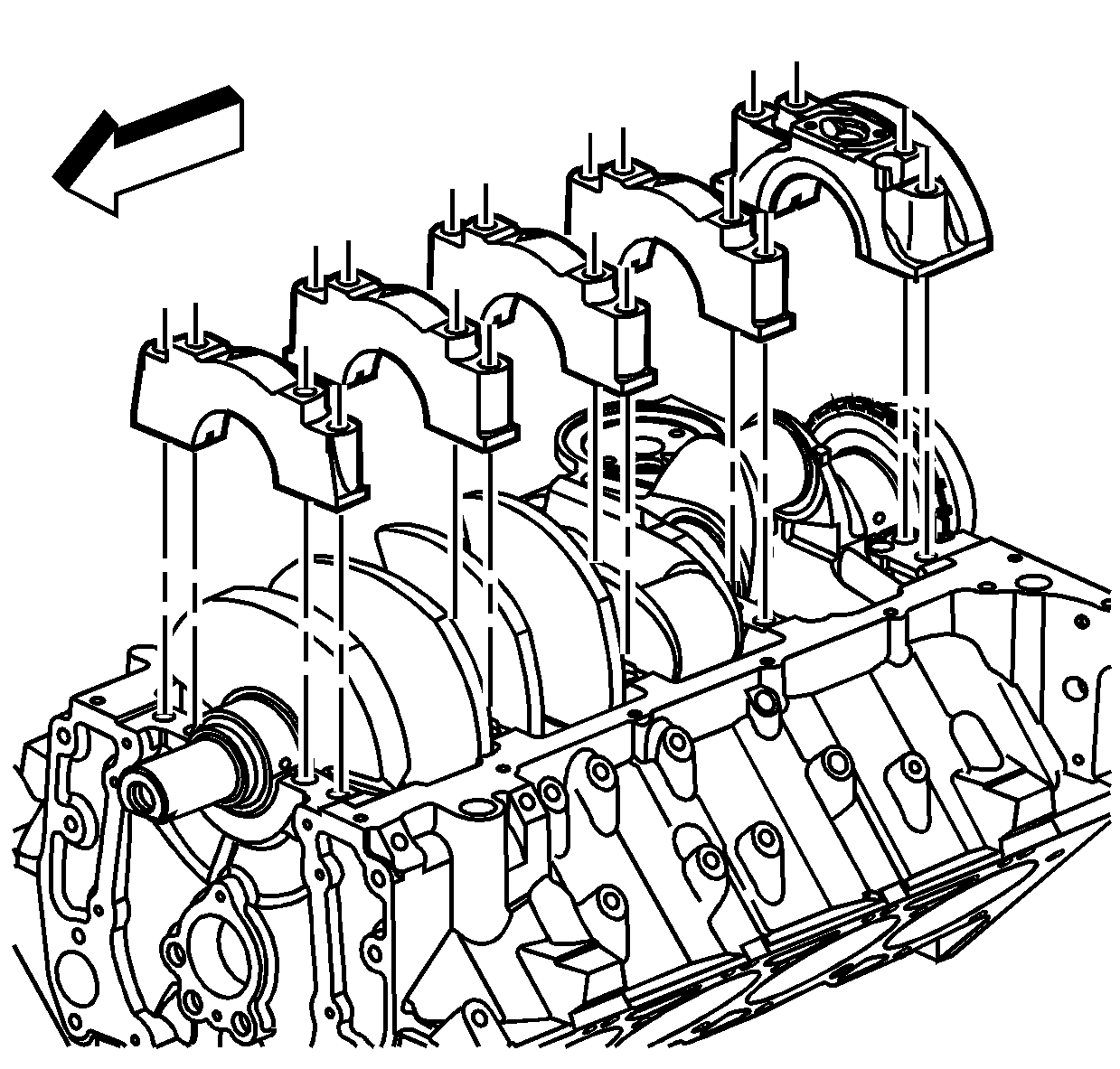
Notice: In order to prevent the possibility of cylinder block or
crankshaft bearing cap damage, the crankshaft bearing caps are tapped into
the cylinder block cavity using a brass, lead, or a leather mallet before
the attaching bolts are installed. Do not use attaching bolts to pull the
crankshaft bearing caps into the seats. Failure to use this process may damage
a cylinder block or a bearing cap.
Important: Care should be taken when installing the rear bearing cap to prevent
damage to the crankshaft position sensor reluctor wheel. If the reluctor wheel
is damaged, the crankshaft must be replaced.
Important: Ensure that the triangle symbols on the crankshaft bearing caps are
facing the front of the engine.
- Install the crankshaft bearing caps.
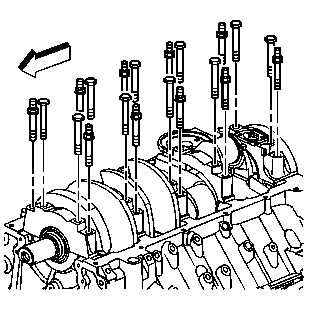
Notice: Use the correct fastener in the correct location. Replacement fasteners
must be the correct part number for that application. Fasteners requiring
replacement or fasteners requiring the use of thread locking compound or sealant
are identified in the service procedure. Do not use paints, lubricants, or
corrosion inhibitors on fasteners or fastener joint surfaces unless specified.
These coatings affect fastener torque and joint clamping force and may damage
the fastener. Use the correct tightening sequence and specifications when
installing fasteners in order to avoid damage to parts and systems.
Important: Tighten the crankshaft bearing cap inner bolts before tightening the
crankshaft bearing cap outer studs.
- Install the crankshaft bearing cap bolts and studs.
Tighten
- Tighten the crankshaft bearing cap inner bolts to 30 N·m
(22 lb ft).
- Tighten the crankshaft bearing cap outer studs to 30 N·m
(22 lb ft).
- Using J 36660-A
,
tighten the crankshaft bearing cap inner bolts an additional 90 degrees.
- Using J 36660-A
,
tighten the crankshaft bearing cap outer studs an additional 80 degrees.
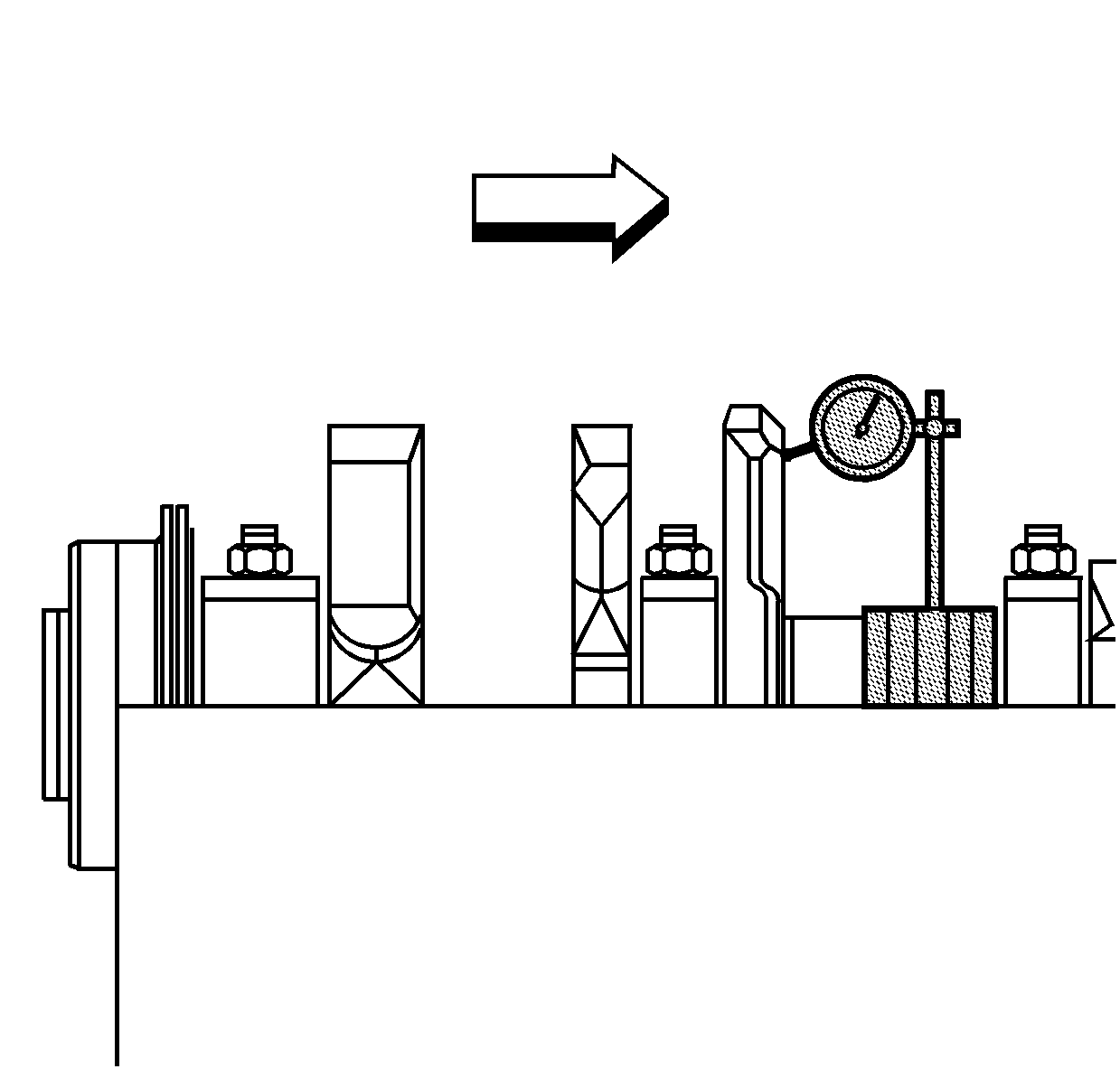
- Measure the crankshaft
end play as follows:
| 7.1. | Install the J 8001
or equivalent to the cylinder block, with the dial indicator plunger
against one of the counterweights of the crankshaft. |
| 7.2. | Firmly thrust the end of the crankshaft first rearward then forward.
This will line up the rear crankshaft bearing and the crankshaft thrust surfaces. |
| 7.3. | With the crankshaft pushed forward, zero the dial indicator. Move
the crankshaft rearward, and read the end play measurement on the dial indicator.
An optional method is to insert a feeler gauge between the crankshaft and
the bearing surface and measure the clearance. Refer to Engine Mechanical
Specifications. |
| 7.4. | If the correct end play cannot be obtained, inspect for the following
conditions: |
| • | Verify that the correct size crankshaft bearing has been installed.
Refer to Engine Mechanical Specifications. |
| • | Inspect the crankshaft thrust wall surface(s) for wear and/or
excessive runout. Refer to Engine Mechanical Specifications. |
| 7.5. | Inspect the crankshaft for binding. Turn the crankshaft to check
for binding. If the crankshaft does not turn freely, loosen the crankshaft
bearing bolts and studs, one cap at a time, until the tight bearing is located.
The following condition(s) could cause a lack of clearance at the bearing: |
| • | Burrs on the crankshaft bearing cap |
| • | Foreign material between the bearing and the block |
| • | Foreign material between the bearing and the bearing cap |
| • | A faulty crankshaft bearing |
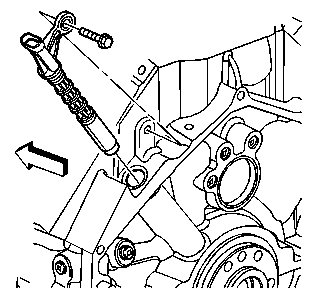
Important: Ensure that the crankshaft position sensor is fully seated against the
crankshaft reluctor ring. The upper flange on the sensor MAY NOT seat against
the engine block.
Important: The crankshaft position sensor bolt has a thread sealant applied to
the threads. The thread sealant may have come off during the removal of the
bolt. Ensure that the bolt hole is clean of any debris before installing
the crankshaft sensor bolt.
- Inspect both crankshaft position sensor O-rings for cuts, cracks, tears
or damage. Replace the O-rings as needed. Lubricate the crankshaft position
sensor O-rings with clean engine oil.
- Install the crankshaft position sensor into the block.
There may be a slight resistance as the O-rings seat into the engine
block.
- Apply thread sealer GM P/N 12345493 or equivalent
to the crankshaft position sensor bolt.
- Install the crankshaft position sensor bolt.
Tighten
Tighten the crankshaft position sensor bolt to 12 N·m (106 lb in).








